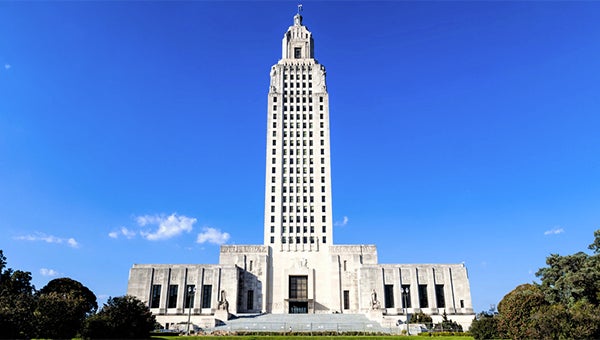Historic train depot gets new ‘Hobo’ signs
Published 9:31 am Monday, September 19, 2016

- DAILY NEWS PHOTO/Jesse Wright The new signs feature the distinctive “Hobo” typeface. It was adopted by the Great Southern Lumber Company as its official typeface.
This week, longtime railroad enthusiast Foots Quinn and his son, Kelly, installed two new station signs on the old train depot on Austin Street.
The depot used to be a stopping point along the Gulf Mobile and Ohio Railroad’s Rebel Route, a line that terminated in New Orleans. Foots is a member of the GM&O’s historical society and he said at one time, Bogalusa had a regular passenger train stop.
“In 1954, people would be hanging around here to get on the Rebel,” Foots said.
He said in those days, this line boasted the first Streamline engine fleet in the South. Those trains were developed in the 1930s, and they feature the distinct bullet front associated with the art deco movement from the mid-20th century. The trains were built for speed and luxury, and the Bogalusa line traveled from the mid-South down to the Gulf.
Friday morning, after he installed the new signs, he and his son were standing on the old concrete platform, alone. Weeds struggled through the cracks.
It’s been decades since anyone waited for the Rebel Route, and the GM&O line dissolved in 1973. Nevertheless, Foots said he wanted to reconstruct the signs, as the GM&O group is passionate about historic rail preservation. He got the idea to create the signs during a meeting in Memphis several years ago, when he heard other members mention how unique the Bogalusa signs were due to their distinctive typeface.
Anyone who has been through Bogalusa knows the distinctive typeface spread across the town’s signage. It is called the “Hobo” typeface, and Foots said for decades it was associated with Bogalusa.
The typeface dates to the early 20th century, and Foots said it was adopted by the Great Southern Lumber Company as its official typeface. Today, the typeface has fallen somewhat out of fashion and there is a website, hatehobo.tumblr.com, dedicated to complaining about it. Nevertheless, the typeface is synonymous with Bogalusa.
“Every board that the Great Southern Lumber Company cut had a ‘Bogalusa’ stamp on it,” he said. “And people in Colorado would get it and say, ‘What’s a Bogalusa?’”
This is the same typeface used on the railroad depot sign. Foots explained that the lettering was done by Patty McGuire, and Charles Rimes helped pay for the signs.
The depot is now privately owned, but Foots explained that since the city declared October to be Railroad History Month, he thought the new signs would be an appropriate gesture.





